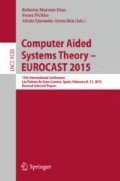Abstract
The Automatic Identification System (AIS) is a Very High Frequency (VHF) radio broadcasting system frequencies (161.975 MHz and 162.025 MHz) that transfers packets of data over the data link (HDLC) [1, 2] and enables AIS-equipment vessels and shore-based stations to send and receive identification information that can be displayed on a computer. It was originally conceived as a navigational aid for ship monitoring and collision avoidance at sea that over time, has evolved into a system with a multitude of additional applications, including experimental systems in academic and research environments.
Access this chapter
Tax calculation will be finalised at checkout
Purchases are for personal use only
References
ITU-R M.1371-5 Technical characteristics for a universal shipborne automatic identification system using time division multiple access in the VHF maritime mobile band
ISO/IEC 3309:1993: Information technology – Telecommunications and Information Exchange Between Systems – High-Level Data Link Control (HDLC) Procedures-Frame Structure (1993)
International Maritime Organization: International Convention on the Safety of the Life at Sea (SOLAS) (1974)
IMO (International Maritime Organization). www.imo.org
Report ITU-R M.2123: Long range detection of automatic identification system (AIS) messages under various tropospheric propagation conditions
Green, D., Fowler, C., Power, D.: VHF Propagation Study, C-Core (2011)
Vesecky, J.F., Laws, K.E., Paduan, J.D.: Using HF surface wave radar and the ship automatic identification system (AIS) to monitor coastal vessels. In: 2009 IEEE International Symposium on Geoscience and Remote Sensing, IGARSS 2009, vol. 3. IEEE (2009)
Howlett, E., Mulanaphy, N., Menton, A., Sontag, S.: Web based oil spill response system. In: The International Oil Spill Conference Proceedings. American Petroleum Institute (2014)
Boubeta-Puig, J., Medina-Bulo, I., Ortiz, G., Fuentes-Landi, G.: Complex event processing applied to early maritime threat detection. In: The Proceedings of the 2nd International Workshop on Adaptive Services for the Future Internet and 6th International Workshop on Web APIs and Service Mashups. ACM (2012)
Sullivan, A.K.: Piracy in the horn of Africa and its effects on the global supply chain. J. Transp. Secur. 3(4), 231–243 (2010)
Dawson, J., Johnston, M.E., Stewart, E.J.: Governance of Arctic expedition cruise ships in a time of rapid environmental and economic change. Ocean Coast. Manage. 89, 88–99 (2014)
Tichavska, M., Tovar, B.: Port-city exhaust emission model: an application to cruise and ferry operations in Las Palmas Port. Transp. Res. Part A: Policy Pract. 78, 347–360 (2015)
Tichavska, M., Tovar, B.: Environmental cost and eco-efficiency from vessel emissions in Las Palmas Port. Transp. Res. Part E: Logist. Transp. Rev. 83, 126–140 (2015)
Tudorica, D.: A comparative analysis of various methods of gas, crude oil and oil derivatives transportation. Int. J. Sustain. Econ. Manage. 3(1), 16–25 (2014)
MarineTraffic, http://www.marinetraffic.com
Author information
Authors and Affiliations
Corresponding author
Editor information
Editors and Affiliations
Rights and permissions
Copyright information
© 2015 Springer International Publishing Switzerland
About this paper
Cite this paper
Tichavska, M., Cabrera, F., Tovar, B., Araña, V. (2015). Use of the Automatic Identification System in Academic Research. In: Moreno-Díaz, R., Pichler, F., Quesada-Arencibia, A. (eds) Computer Aided Systems Theory – EUROCAST 2015. EUROCAST 2015. Lecture Notes in Computer Science(), vol 9520. Springer, Cham. https://doi.org/10.1007/978-3-319-27340-2_5
Download citation
DOI: https://doi.org/10.1007/978-3-319-27340-2_5
Published:
Publisher Name: Springer, Cham
Print ISBN: 978-3-319-27339-6
Online ISBN: 978-3-319-27340-2
eBook Packages: Computer ScienceComputer Science (R0)

